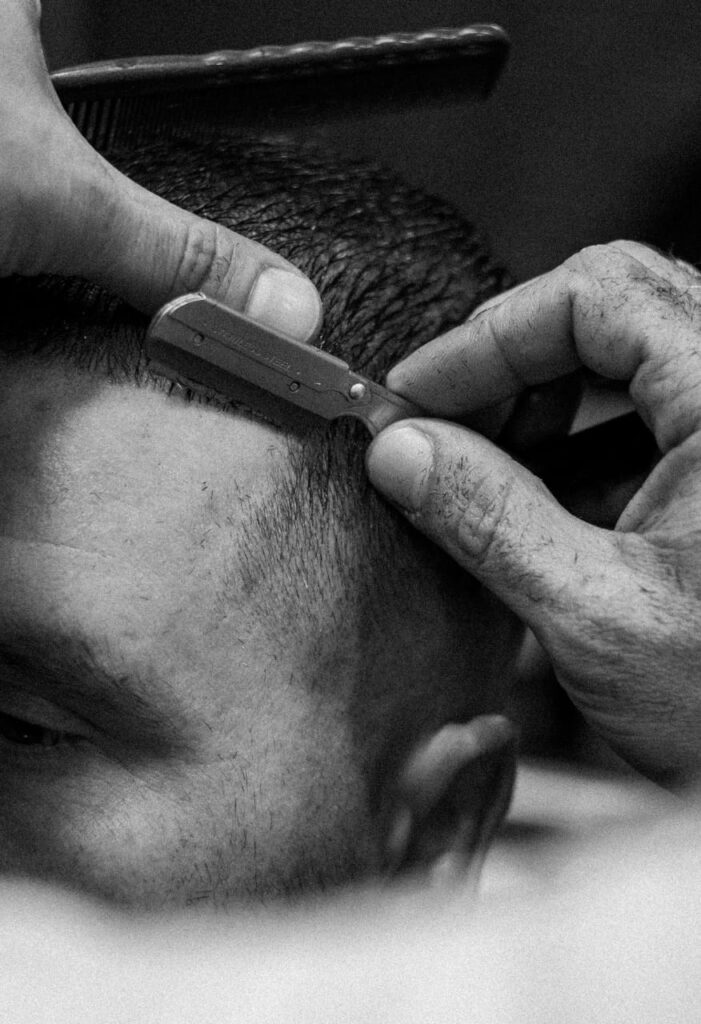
Getting your scalp tattoo allows you to replicate the look of natural hair using small pigment deposits, and you benefit from a low-maintenance style that blends with your hairline or covers thinning areas. A hair tattoo works for men and women affected by baldness or thinning caused by genetics or medical conditions. Here are a few techniques used for hair tattoos:
Precision SMP
Precision scalp micropigmentation (SMP) is a specialized method that simulates the look of hair follicles using carefully placed pigment deposits. A trained practitioner uses equipment designed for detailed scalp work. They place each pigment dot with a consistent space between them; the goal is to create a uniform pattern that follows your natural hair growth.
Your treatment may begin with an assessment of your scalp, existing hair, and areas of concern. The practitioner develops a plan that outlines where and how pigment will be applied. The process could take place over multiple sessions to allow for layering and adjustment. Each session focuses on controlled placement to build density. Pigment tone, deposit size, and spacing are customized to match your unique features; this method is suitable for both general thinning and scar coverage.
Custom Blending
Custom blending is when your artist prepares a pigment mix that matches your natural hair and skin tone before applying the hair tattoo; this technique also supports scar camouflage by allowing pigment to be deposited into and around scar tissue. When blended well, the pigments help cover the scar, making it less noticeable in tone and texture. During treatment, your artist may refine the blend between sessions; this allows for subtle adjustments based on how your scalp responds over time. The approach helps maintain even shading across different areas of the scalp.
Custom blending can be helpful when working with complex skin surfaces. Your scalp’s natural oils and undertones influence how pigment settles and reflects light. Matching these variables during pigment mixing creates a result that looks balanced in natural and artificial lighting; this technique gives artists more flexibility when tailoring the tattoo to your needs.
Layering and Shading
With layering and shading techniques, the artist is able to give your tattoo depth and dimension; you may request specific details, such as highlights or lowlights, to make your hair tattoo appear more realistic. Having a gradient effect in your scalp tattoo sometimes helps the design blend better with your natural hair. Layering may be done during different sessions, allowing the practitioner to adjust the pigment as it settles.
The gradual approach helps achieve balance across different areas when matching the density of surrounding hair. Your artist may vary the pigment saturation or space the impressions differently to refine the effect over time. Shading techniques are able to soften edges where your natural hair thins out; it’s also used to tone down contrast when darker pigments are applied.
Tailored Treatment
SMP artists may create a customized treatment by studying your hair growth, skin tone, and the condition of your scalp. Even slight variations in the direction of hair or the spacing of the follicles are considered when coming up with the final design; this level of detailing can assist in achieving a result that is more aligned with your specific look and works towards creating a more uniform appearance of the scalp. The artist is able to place the pigments to line up with your natural hairline; this is an effective treatment for those with receding hairlines. When blending SMP with your existing hair, it is helpful to keep your hair short so that the look can be more realistic. A practitioner is able to suggest hairlines that will complement the head shape for those who are bald.
Get Ready for Your Hair Tattoo
Before getting a hair tattoo, think about the hairline shape and pigment shade you’d prefer to have. You could avoid sun exposure for a few days beforehand to reduce skin sensitivity. Cleaning and moisturizing your scalp the night before helps to prepare the skin for pigment application. If you use topical treatments or medications on your scalp, ask the artist if they should be paused during treatment. Speak with a professional scalp micropigmentation artist to explore options that align with your goals.





